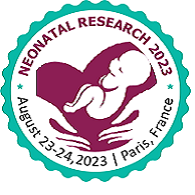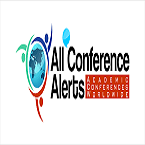Sessions/Tracks
Track 1: Neonatology
Neonatology is a subspecialty of pediatrics that consists of the medical care of newborn infants, especially the ill or premature newborn. It is a hospital-based specialty, and is usually practiced in neonatal intensive care units (NICUs).The principal patients of neonatologists are newborn infants who are ill or require special medical care due to prematurity, low birth weight, intrauterine growth restriction etc.
-
Community neonatal education
-
Fetal and perinatal therapy
-
Neonatal medicine
-
Neonatal health
-
Neonatal resuscitation
-
Neonatal nursing
Track 2: Perinatology
Perinatology is a subspecialty of obstetrics concerned with the care of the fetus and complicated, high-risk pregnancies. Perinatology is also known as maternal-fetal medicine. Since the perinatal period, depending on the definition, starts at the 20th to 28th week of gestation and ends 1 to 4 weeks after birth, perinatology logically could be an obstetrical and pediatric subspecialty but, in practice, it is part of obstetrics. The comparable area of pediatrics is neonatology. A high-risk baby might be cared for by Perinatologists before birth and by a neonatologist after birth.
-
Birth asphyxia
-
Amniotic band syndrome
-
Neonatal drugs
-
Breech birth
-
Neonatal jaundice
-
Low birth weight
-
Cleft lip & palate
-
Maternal and fetal health
-
Ultrasound in perinatology
-
Obstetrics & gynecology
Track 3: Pediatrics
Pediatrics is one of the fields of medicine which is concerned with the medical, health care and development of babies and children and their opportunity to get complete potential to grow into adults. Pediatrics follows the age range from infants to adolescents. Pediatrics is the newly emerged medical specialty. The main aim of the Paediatrics is to reduce the child and infant death rates, to control the spreading of infectious diseases and to promote healthy life styles. Pediatrics is not only concerned about the immediate cure but also the long term effects on quality life, abilities and survival.
-
Pediatric gastroenterology
-
Pediatrics nephrology and urology
-
Pediatric psychology
-
Pediatrics surgery
-
Pediatrics dermatology
-
Pediatrics pharmacology
-
Clinical pediatrics
-
Pediatrics neurology
-
Pediatric cardiology
-
Pediatrics dentistry
-
Pediatrics allergy and infections
-
Breast feeding
-
Pediatric nursing
Track 4: Neonatal Intensive Care Unit (NICU)
A Neonatal intensive care unit (NICU), also known as an intensive care nursery (ICN), is an intensive care unit specializing in the care of ill or premature newborn infants. A NICU is typically directed by one or more neonatologists and staffed by nurses, nurse practitioners, pharmacists, physician assistants, resident physicians, respiratory therapists, and dietitians. Many other ancillary disciplines and specialists are available at larger units.
Neonatal nurse practitioners are advanced practice nurses that care for premature babies and sick newborns in intensive care units, emergency rooms, delivery rooms and special clinics. Prematurity is a risk factor that follows early labour, a planned caesarean section or pre-eclampsia.
-
Premature infants/ preemies
-
Special care nursery
-
Anemia
-
Feeding issues
-
Hypoglycemia
-
Intrauterine growth restriction (IUGR)
-
Retinopathy of prematurity (ROP)
-
Macrosomia
Track 5: Congenital Malformations & Birth Complications
A congenital disorder, also known as a congenital disease, deformity, birth defect, or anomaly, is a condition existing at or before birth regardless of cause. Of these disorders, those characterized by structural deformities are termed "congenital anomalies" and involve defects in a developing fetus. Birth defects vary widely in cause and symptoms. Any substance that causes birth defects is known as a teratogen. Some disorders can be detected before birth through prenatal diagnosis (screening).
Birth defects may be the result of genetic or environmental factors. This includes errors of morphogenesis, infection, epigenetic modifications on a parental germline, or a chromosomal abnormality. The outcome of the disorder will depend on complex interactions between the pre-natal deficit and the post-natal environment. Animal studies indicate that the mother's (and likely the father's) diet, vitamin intake, and glucose levels prior to ovulation and conception have long-term effects on fetal growth and adolescent and adult disease. Animal studies have shown that paternal exposures prior to conception and during pregnancy result in increased risk of certain birth defects and cancers.
-
Congenital heart disease in newborns
-
Spina bifida
-
Cleft lip and cleft palate
-
Congenital dislocated hip
-
Congenital malformations of genital organs
-
Deformations of the musculoskeletal system
-
Down syndrome
-
Club foot
-
Phenylketonuria
Track 6: Neonatal Mortality & Neonatal Nursing
Infant mortality is the death of young children under the age of 1. This death toll is measured by the infant mortality rate, which is the number of deaths of children less than one year of age per 1000 live births. Neonatal nursing is a subspecialty of nursing that works with newborn infants born with a variety of problems ranging from prematurity, birth defects, infection, cardiac malformations, and surgical problems. The neonatal period is defined as the first month of life; however, these newborns are often sick for months. Neonatal nursing generally encompasses care for those infants who experience problems shortly after birth, but it also encompasses care for infants who experience long-term problems related to their prematurity or illness after birth.
A few neonatal nurses may care for infants up to about 2 years of age. Most neonatal nurses care for infants from the time of birth until they are discharged from the hospital. A neonatal death is defined as a death during the first 28 days of life (0-27 days). The NMR is often broken down into early and late mortality rates.
-
Neonatal nutrition nursing
-
Perinatal mortality rate
-
Challenges in neonatal nursing
-
Care for congenital cardiac issues
-
Special care for premature infants
-
Newborn care
-
Standard of neonatal nursing practice
-
Neonatal clinical nursing
-
Neonatal nursing intensive care
-
Family nurse practitioner education
-
Role of midwives in neonatal mortality rate
Track 7: Neonatal Heart Diseases and Problems
Congenital heart disease (CHD) is the most common congenital disorder in new-borns. Critical CHD, defined as requiring surgery or catheter-based intervention in the first year of life, occurs in approximately 25% of those with CHD. Although many new-borns with critical CHD are symptomatic and identified soon after birth, others are not diagnosed until after discharge from the birth hospitalization. In infants with critical cardiac lesions, the risk of morbidity and mortality increases when there is a delay in diagnosis and timely referral to a tertiary center with expertise in treating these patients.
Some congenital heart problems are now picked up when the mother has an ultrasound scan during pregnancy (usually at the 20-week scan), but sometimes they are not found until after the baby has been born. Some conditions may not be discovered until the child is older or even an adult.
-
Heart failure in newborn
-
Atrial septal defect
-
Atrioventricular septal defect
-
Congenital heart defects
-
Infective endocarditis
-
Arrhythmia
-
Pulmonary hypertension
-
Neonatal cardiology
Track 8: Neonatal and Fetal Nutrition
Fetal nutrition is one of these factors: the complex interaction between genetic growth potential, the ability of the maternal–placental system to transfer nutrients to the fetus and the endocrine environment determine whether the fetus will follow its growth potential during intrauterine life.
-
Breast feeding
-
Infant and newborn nutrition
-
Infant formula
-
Feto placental nutrition
Track 9: Neonatal Genetics
Newborn screening is a screening in infants shortly after birth for a list of conditions that are treatable, but not clinically evident in the newborn period. Some of the conditions included in newborn screening programs are only detectable after irreversible damage has been done, in some cases sudden death is the first manifestation of a disease. Screening programs are often run by state or national governing bodies with the goal of screening all infants born in the jurisdiction.
Newborn screening originated with an amino acid disorder, phenylketonuria (PKU), which can be easily treated by dietary modifications, but causes severe mental retardation if not identified and treated early.
-
Neonatal cellular bioenergetics
-
Neonatal pharmacokinetics
-
Maternal obesity
-
Fetal origins of adult disease
-
Neonatal screening
Track 10: Neonatal Research
Neonatal Research is research to improve the Health of Low Birth Weight and Premature Infants. Neonatal Research includes trials of therapies for sepsis, intraventricular hemorrhage, chronic lung disease, and pulmonary hypertension as well as studies of the impact of drug exposure on child and family outcome.
There is a need to develop consistent nomenclature describing the type of data we want to capture about medications and their safety and effectiveness in neonates.
-
Extremely low birth weight infants
-
Congenital anomalies
-
Neonatal morbidities
-
Neonatal hypothermia
-
Neonatal health services research
-
Prenatal care
-
Current research on Zika virus
-
Drug exposure to infant
-
Meningomyelocele
-
Intraventricular hemorrhage
Track 11: Neonatal CNS Disorders
The central nervous system of a growing foetus starts with a simple structure called the ‘neural groove’ that folds in to form the ‘neural tube’. This then develops into the spinal cord and brain. By day 28 after conception, the neural tube should be closed and fused. If it doesn’t close, the result is a neural tube defect.
In many cases, these defects can be diagnosed during pregnancy with ultrasound scans and, rarely, with other tests such as amniocentesis (analysing a sample of amniotic fluid).
-
Pediatric neurology
-
Neonatal brain injuries
-
Epilepsy
-
Neonatal seizure
-
Neuroimaging
-
Behavioral psychology
-
Neonatal neurodevelopments
-
Brain damage in Neonate
-
Neonatal encephalopathy
-
Neuromuscular disease
-
Neurological complications of AIDS
-
Neurodevelopmental disorders
-
Cerebral palsy
Track 12: Neonatal Renal Disorder
Acute renal failure (ARF) is a very common problem in the neonatal intensive care unit. The new-born kidney has a very low glomerular filtration rate (GFR) that is maintained by a delicate balance between vasoconstrictor and vasodilatory forces. Although sufficient for growth and development under normal conditions, the low GFR of the new-born kidney limits postnatal renal functional adaptation to endogenous and exogenous stresses. This limited response predisposes the new-born to the development of ARF and is even more pronounced in the low birth weight infant (ie, <2,500 g due to preterm birth or intrauterine growth restriction). Given this predisposition, early identification of ARF in the neonate is essential to preserving renal function.
-
Peritoneal dialysis
-
Renal tubular acidosis
-
Systemic Lupus Nephritis
-
Urinary tract infections
-
End stage renal failure
-
Glomerulonephritis
-
Chronic renal failure in neonates
-
Nephrotic syndrome
-
Neonetal ECG basics and common problems
-
Proteinuria
Track 13: Neonatal Infectious Diseases & Antibiotics
Neonatal infections are infections of the neonate (newborn) during the neonatal period or first four weeks after birth. Neonatal infections may be contracted by transplacental transfer in utero, in the birth canal during delivery (perinatal), or by other means after birth. Some infections acquired in the neonatal period do not become apparent until much later such as HIV, hepatitis B and malaria.
There is a higher risk of infection with preterm or low birth weight neonates. Respiratory tract infections contracted by preterm neonates may continue into childhood or possibly adulthood with long-term effects that limit one's ability to engage in normal physical activities, decreasing one's quality of life and increasing health care costs. In some instances, neonatal respiratory tract infections may increase one's susceptibility to future respiratory infections and inflammatory responses related to lung disease.
Antibiotics can be effective treatments for neonatal infections, especially when the pathogen is quickly identified. Instead of relying solely on culturing techniques, pathogen identification has improved substantially with advancing technology; however, neonate mortality has not kept pace and remains 20% to 50%. While preterm neonates are at a particularly high risk, full term and post-term infants can also develop infection.
-
Sexually transmitted diseases in neonates
-
Neonatal sepsis
-
Infant botulism
-
Stomach & intestinal infections
-
Bacterial & viral infections
-
Fungal infections
-
Parasitic infections
-
Lung & respiratory infections
-
Medical tests & diagnosis
-
Neonatal tetanus
Track 14: Neonatal Respiratory Diseases
Respiratory distress in the neonate most commonly presents as one or all of the following physical signs: tachypnea, grunting, nasal flaring, retractions, and cyanosis. A normal respiratory rate in a new-born is between 30 and 60 breaths/min; tachypnea is classified as respiratory rates greater than 60 breaths/min.
Neonatal respiratory distress syndrome (RDS) is a problem often seen in premature babies. The condition makes it hard for the baby to breathe. The disease is mainly caused by a lack of a slippery substance in the lungs called surfactant. This substance helps the lungs fill with air and keeps the air sacs from deflating. Surfactant is present when the lungs are fully developed.
Neonatal RDS can also be due to genetic problems with lung development. Most cases of RDS occur in babies born before 37 to 39 weeks. The more premature the baby is, the higher the chance of RDS after birth. The problem is uncommon in babies born full-term (after 39 weeks).
-
Chronic lung diseases
-
Bronchopulmonary dysplasia
-
Asthma in neonates
-
Pneumonia
-
Apnea
-
Persistent pulmonary hypertension of the newborn (PPHN)
-
Respiratory distress syndrome (RDS)
Track 15: Neonatal Syndromes
Neonatal Abstinence Syndrome: Fetal and neonatal addiction and withdrawal as a result of the mother's dependence on drugs during pregnancy. Withdrawal or abstinence symptoms develop shortly after birth. Symptoms exhibited are loud, high-pitched crying, sweating, yawning and gastrointestinal disturbances.
-
Neonatal abstinence syndrome
-
Intussusceptions
-
Twin-to-twin transfusion syndrome
-
Sudden infant death syndrome (SIDS)
-
Gastroschisis in the newborn
Track 16: Vaccination and Immunization
New-borns have an immature immune system that renders them at high risk for infection while simultaneously reducing responses to most vaccines, thereby posing challenges in protecting this vulnerable population. A vaccine is an antigenic preparation used to produce active immunity to a disease, in order to prevent or reduce the effects of infection by any natural or "wild" pathogen. Many vaccines require multiple doses for maximum effectiveness, either to produce sufficient initial immune response or to boost response that fades over time. For example, tetanus vaccine boosters are often recommended every 10 years. Vaccine schedules are developed by governmental agencies or physicians groups to achieve maximum effectiveness using required and recommended vaccines for a locality while minimizing the number of health care system interactions.
-
Vaccines and immunity for newborns
-
Neonatal skin diseases
-
Hib vaccine
-
Influenza vaccine
-
Measles, Mumps & Rubella Vaccine (MMR)
-
Meningococcal Vaccines
-
Pneumococcal Vaccines (PCV, PPSV)
-
Polio Vaccine (IPV)
-
Probiotics, prebiotics & synbiotics
-
Human Papillomavirus (HPV) Vaccine
-
Diphtheria, Tetanus & Pertussis Vaccine (DTaP)
-
Chickenpox vaccine
-
Hepatitis A & B Vaccine (HepA)
-
Congenital langerhans cell histiocytosis
Track 17: Neonatal Skin Diseases
Neonatal skin is structurally unique. Dermatological diseases in neonates are commonly benign and self-limiting, but they may also herald underlying systemic disease and can be life threatening. Transient neonatal pustular melanosis is a benign, idiopathic skin condition characterized by vesicles, superficial pustules, and pigmented macules. The overall incidence is 2.2%, equally divided between sexes, with rates of 0.6% in white and 4.4% in black infants. Skin conditions are seen frequently throughout childhood, from infancy through adolescence. There are many causes, including infection and inflammation. Rashes, birthmarks, and other skin conditions are encountered frequently in infancy. Most new-born rashes are benign and require no treatment.
-
Congenital sinus
-
Vascular naevi
-
Port wine strain
-
Ectodermal dysplasia
-
Ether donlos syndrom
-
Herpes simplex infection
-
Blestoring disorder
-
Lipoid protienosis
-
Incontinentia pigmenti
-
Keratosis follicularis (Darier disease)
-
Skin infections & rashes
Track 18: Neonatal Eye Problems
New-born babies are able to follow a light with their eyes and turn toward lights. They are very near-sighted at first, and they can focus best on things that are within 25 cm (10 inches) of their faces. Their vision improves over the first three months. In time, his ability to focus will improve and he will see as well as the rest of us.
There are a few things that you might be concerned about, with regard to your new-born baby’s eyes: uncoordinated eyes, crossed eyes, and teary eyes.
Eye problems in babies may be congenital (usually genetic or through intrauterine insult) or acquired after birth. Early detection and prompt treatment are essential, in order to avoid lifelong visual impairment. The eyes should be examined at the first neonatal check, when babies should be examined for structural abnormalities such as cataract, corneal opacity, ptosis and retinoblastoma, again at the six-week check, and at every well-child screening visit. Any child with an ocular abnormality should be referred to an ophthalmologist specialising in paediatric patients.
-
Pink Eye (Conjunctivitis)
-
Blocked tear ducts
-
Vision impairment
Track 19: Neonatal Surgery
Neonatal surgery is the sub-specialty of pediatric surgery that includes the surgical care of newborn infants especially new born who are ill. Neonatal surgeons are the ones who perform surgeries including chest, abdominal and urological defects. Neonatal surgery includes the treatment of infants in the first 28 days of birth.
A general surgeon can perform surgery on adults and children, but pediatric surgeons have the advanced education and skills necessary to perform surgery on infants and very young children.
-
Neonatal laparoscopic surgery
-
Newborn screening
-
Anesthesia for neonatal surgery
-
Congenital malformations and birth defects
-
Surgical emergencies
-
Abdominal wall defects
-
Necrotising enterocolitis
-
Anesthetic techniques
Track 20: Neonatal Disorder
Obstetricians play a major role to minimise the number of neonatal disorders. Prematurity, respiratory dysfunction, birth trauma, congenital malformations, neonatal infection and haemolytic disorders of the new-born and some common neonatal disorders include sudden infant death syndrome (SIDS) and neonatal jaundice. SIDS is the leading cause of death among infants who are one month to one year old are some examples of neonatal disorders commonly encountered. A healthy start in life is important to every new-born baby. The first 28 days, called the neonatal period, is especially critical. It is during this time that fundamental health and feeding practices are established.
-
Hyperthyroidism in neonates
-
Dengue fever in babies
-
Thrush
-
Chikungunya in babies
-
Roseola
-
Fifth disease (slaped cheeks disease)
-
Pinworms
-
Meningitis
-
Polio
-
Brain tumors
-
Cancer in neonates
-
Neonatal diabetes
-
Role of echochardiography in managing difficult ventilation in newborn infants
-
Rotavirus
Track 21: Ethical Issues and Neonatology in Future
As Neonatal medicine has become an important research, it is important to discuss the ethical issues involved for the betterment of a new born baby’s health. Learning more about the ethical, legal and social issues on giving intensive care to babies born before 26 weeks helps to improve the neonatal medicine and care.
-
Perinatal-Neonatal medicine
-
Ethical issues in Neonatal intensive care
-
Neonatal abstinence syndrome
Track 22: Neonatal Pulmonary disorders
Respiratory distress is a common presenting feature immediately after birth and is typically caused by abnormal respiratory function during the transition from fetal to neonatal life.When a neonate is effected by respiratory disorders there will be higher risk conditions and requires clinical care by a physician or other health care professional.












